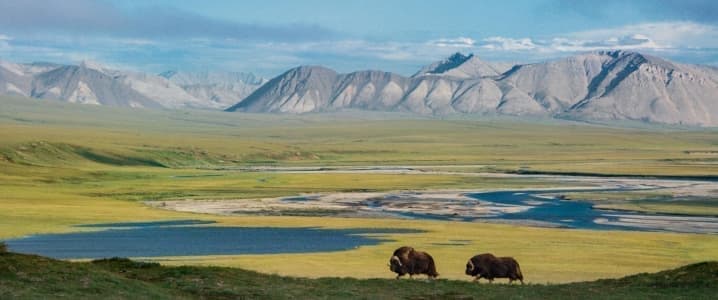The Arctic National Wildlife Refuge (ANWR) has long been of great interest to oil executives, state and federal politicians, and those concerned with the United States’ energy security. Until fracking came on the scene, many considered ANWR to be the “last frontier” in terms of exploration for incremental oil and gas supplies. The battle to open ANWR or keep it closed has swung back and forth for decades. Today, though, Donald Trump’s Department of the Interior is moving to make it available it for drilling via lease auctions if and when the unavoidable litigation hurdle is overcome.
If the ANWR lease auctions do occur, the “Trumpies” at Interior are in for a disappointment. Few if any publicly held oil firms will submit bids. While the oil may be there, the funds to find and extract it are not. Even those firms still capable of conducting massive exploration and production programs will bend to investor pressure and shun such vast outlays.
The signs of oil’s retreat from expansion are already present. BP, for example, recently sold all its Alaskan properties to the privately held Hilcorp. It, like all publicly held companies, must keep investors happy and thus safeguard the cash influx that helps keep them in business.
Indeed, all large publicly held firms capable of mounting E&P efforts in Alaska need to stay on the right side of their investors, especially the large ones. They are well aware of the hurt these groups can inflict on them. For example, Norway’s sovereign wealth fund and a group organized by the Interfaith Center on Corporate Responsibility, which combined manage more than $6 trillion in investments and own a significant percentage of shares in companies that might drill, have warned they may decide to sell shares in companies that express their intention to explore and develop large areas such as ANWR. Indeed, the Norwegian fund, which owns more than two percent of BP and Shell, has already sold off shares in Occidental and other American independents. Related: Trade War Won’t Kill US Oil Exports
These threats to their bottom lines come at the wrong time for publicly held energy companies. Such firms have almost vanished from the S&P 500 index. While in 1979 they accounted for nearly thirty percent of the index, by the end of 2017 they were down to six percent and then 5.3 percent at the end of 2018 and 4.4 percent at the end of August.
Even with the oil companies’ efforts to appease shareholders, the investors’ disdain for the industry continues to increase. At the end of August, ExxonMobil, which EIG ranks as the largest publicly held oil company, fell out of the S&P 500’s top ten for the first time in the index’s ninety years history, bumped out by the likes of Procter & Gamble and Johnson & Johnson.
Under these circumstances, senior oil executives are scrambling to satisfy their remaining investors by buying back shares, paying larger dividends, and avoiding any actions that might spook or anger them. Drilling in ANWR would be one of those actions. Besides ticking off smaller shareholders, greenlighting such a project could bring the ire of heavyweights like the Norwegian sovereign wealth fund that seek to curtail such activities.
Another reason to stay away from ANWR is that its oil may not be needed. Global fuel use could be much lower in twenty years as auto manufacturers move toward producing and selling large numbers of electric vehicles (EVs). California and several countries have sparked this trend by favoring EV owners with tax breaks and other perks such as fast commuter lane privileges denied to petroleum-powered vehicles. Consumers like where this is going. In 2019 to date, more than fifty percent of the new cars sold in Norway were EVs. EVs also now make up three percent of California’s vehicles, and gasoline use there fallen. Related: Scientists Find Cheaper Way Of Tapping Shale Gas Resources
The potential future onslaught of EVs must be terrifying for oil executives. In one scenario in its forthcoming World Energy Outlook, for instance, the International Energy Agency envisions EVs comprising half of the global vehicle fleet in 2040. Such a development could reduce fossil fuel use in transportation by eighteen million barrels per day from today’s level. While this future seems unlikely, aggressive regulation combined with the auto industry’s cooperation could make it happen.
In such a world, what firm would want to take on the risk and expense of and political/social fallout from drilling in ANWR? Also, any production from ANWR would come onstream when consumption was on the decline, which means the oil would have to be sold into a depressed market. Given these uncertainties, oil firms will shun ANWR and bets their limited investment dollars on short-cycle projects in areas such as the Permian, the Bakken, or other shale oil provinces.
In sum, ANWR’s time as the holy grail of the oil industry has passed. While the fact that such projects would have the current government’s support and that ANWR is conveniently near other producing areas and might yield significant oil and income for years, it is no longer a perfect fit for the industry. Its traditional E&P model no longer applies. Given the oil firms’ financial constrictions and the ambiguity of future oil demand, ANWR will remain, as one National Park Service biologist put it, “one of Planet Earth’s own works of art.”
ADVERTISEMENT
By Philip Verleger for Oilprice.com
More Top Reads From Oilprice.com:
- Asia Gears Up For Energy Storage Boom
- 2020 Election Could Put Oil Out Of Business
- Analyst: OPEC’s Cuts Actually Destabilize Oil Market


















